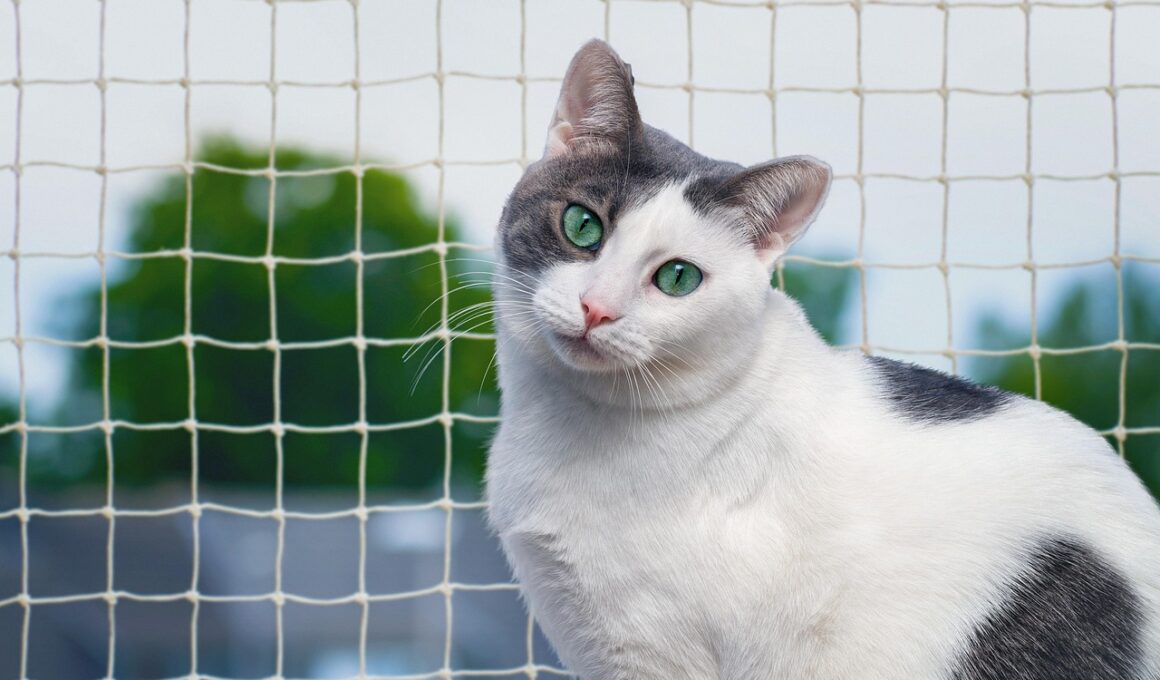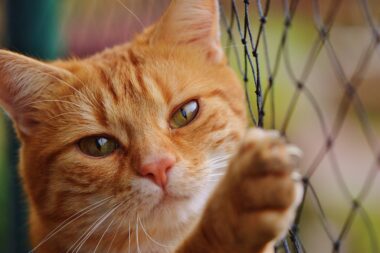How to Handle Door Dashing: Tips to Prevent Cat Escapes
Keeping your cat safe at home is essential, especially to prevent escapes. Cats are naturally curious creatures, and an open door can quickly become an invitation to explore the outdoors. One effective method is to ensure that your doors have secure locks that your cat cannot manipulate. Regularly check these locks to ensure they’re functioning correctly. Sometimes, adding a second layer of security, like a pet door lock, can provide extra assurance. Additionally, training your cat to respond to commands such as ‘stay’ or ‘wait’ when a door opens is invaluable. Use positive reinforcement like treats to reward them for staying put. Moreover, try to limit their access to doorways directly. Create barriers, such as furniture or baby gates, to restrict their movement when doors are in action. You might also want to observe your cat’s behavior when the door opens; distract them with toys to divert attention. Placing scratching posts and other engaging items near the doors can keep them occupied and less likely to dart outside.
Another way to prevent cat escapes is by implementing a “door etiquette” rule in your household. Set up a designated area in your home, preferably away from exit doors, where your cat can enjoy themselves without feeling trapped. This special area can be equipped with cozy blankets, play items, and climbing structures that give your feline a sense of adventure while limiting their escape opportunities. When guests arrive or when you need to go out briefly, bring your cat into this predefined space before opening doors. This way, they will associate the space with safety and comfort when doors are involved. Further, reinforcing calm behavior is crucial when visitors come by. Remind guests to alert you before entering your home that their first instinct should not be to open the door freely. You can also place signs near doors to remind others of your cat’s tendency to dash. Lastly, consider using window screens and ensuring these are secure to give your cats a glimpse of the outside and keep them entertained without risking an escape.
Using Technology for Cat Safety
With advancements in technology, many innovative products can help prevent cat escapes. Automatic door closers can be installed that shut doors securely after a brief opening. Motion sensors placed near doors can alert you when someone approaches, activating lights or alarms as a warning signal. Many cat owners also find smart surveillance cameras helpful, allowing them to monitor their pet’s movements. These cameras can send alerts to your phone if they detect unusual behavior near a door. You may wish to familiarize your cat with these devices, teaching them their purpose over time. Another tech option is using an app that connects to your smart home system to lock or unlock doors remotely, ensuring peace of mind. In addition, introducing smart collars equipped with GPS trackers can add another level of security. If your cat does escape, having the technology to locate them quickly is invaluable. Always ensure your cat wears a collar with an ID tag, even in the house, to increase the chances of being reunited quickly if they manage a getaway.
The design of your living space plays a critical role in cat safety. Consider the placement of furniture and ensure clutter does not create opportunities for escape. Cats often will maneuver between furniture to reach doors quickly, so maintain a clear, organized area. You may find that transitioning to using solid doors rather than screen doors prevents any chance of quick dashes outside. The color and style chosen can be effective deterrents, making the doors appear less inviting to your curious feline. Moreover, regularly check your windows, door frames, and screens are secure. Minimal maintenance steps like weather stripping can prevent cats from squeezing through gaps or cracks. Using floral arrangements and other décor items as a distraction can also play a part in keeping them indoors. Additionally, offering mental stimulation through interactive toys will help keep your cat busy and content. Consider rotating toys frequently to maintain your cat’s interest. If they are less focused on the big outside world, the odds of them escaping decrease significantly; a happier cat is less likely to venture for adventure outdoors.
The Importance of Spaying and Neutering
Spaying and neutering your cat can help reduce their urge to escape. Unaltered cats, especially males, often have a strong drive to roam and seek mates. By having your pet spayed or neutered, you not only reduce these instinctive behaviors but also contribute to their overall health. Younger cats may especially show a desire to dash outside during mating season, creating complications for their safety. This is a responsible step to take as a pet owner, and many local shelters and veterinarians offer affordable services. Furthermore, ensuring that your cat has a secure environment within the home means they should feel less anxious about needing to escape. Regular playtime and bonding exercises become essential in reducing stress-related behaviors leading to escape attempts. Make it part of your cat’s routine to engage with them either through interactive games or in follow-the-leader play sessions. A well-adjusted cat will be more inclined to feel secure inside and not seek the outside world. A combination of behavioral training and health considerations can improve your ability to prevent unwanted instances of door dashing.
Creating a safe outdoor environment for your cat can also significantly reduce their desire to escape. If you have outdoor space available, consider building a secure outdoor catio or enclosure that allows them to enjoy nature without the risks associated with free roaming. This controlled area can house climbing structures, scratching posts, and shaded spots for relaxation. Making this space comfortable and enriching means they’ll have everything they need while being safely confined. Introduce interesting elements such as plants safe for cats and toys that encourage exploration within this enclosed environment. To further safeguard your cat, conduct a thorough inspection of fences or borders surrounding your yard. Installing cat-proof fencing can be an effective deterrent against adventurous escape attempts. An additional option is to utilize harness training, so your cat can explore outdoor settings under your supervision. Allowing them short excursions on a leash reduces the risk of them dashing unchecked, giving both parties peace of mind. Always keep an eye on them to prevent accidents and ensure your cat adjusts comfortably to these new outdoor experiences.
Conclusion: Vigilance is Key
Vigilance is essential when it comes to creating and maintaining an escape-free environment for your feline friend. Always keep an eye on your cat’s behavior to discern any escape attempts. If you notice them trying to rush towards doors, implement preventative measures immediately. Consistency will help maintain their training, and reinforcing boundaries can decrease escape attempts over time. Share these tips with fellow pet owners to foster community support in keeping all pets safe together. Each step taken to ensure their safety is crucial, and positive experiences in the home help cats build trust in their environment. Combining lifestyle modifications with behavioral training has proven effective for many cat owners. Be patient and celebrate any small victories along the way; your efforts will not go unnoticed by your furry companion. Remember, with dedication, you can create a lifestyle that fulfills your cat’s curiosity without the risk of dangerous escapes. Before you know it, your cat will be happily exploring the corners of their safe home rather than the risks of the outside world.
Engaging your cat in various activities while preventing escapes opens up opportunities for strengthening your bond. Regularly interacting with toys, maintaining structure regarding door behavior, and ensuring your cat has adequate stimulation ensure an enriching life for your feline friend. As a responsible pet owner, take on the challenge of protecting your household by using these tips to create a haven for your cat. Escape prevention doesn’t happen overnight, but with commitment and creativity, you can assure your pet has a fulfilling life without venturing beyond your doors. The goal is not to confine them but to offer a space dedicated to their needs while minimizing risks as effective as possible.





